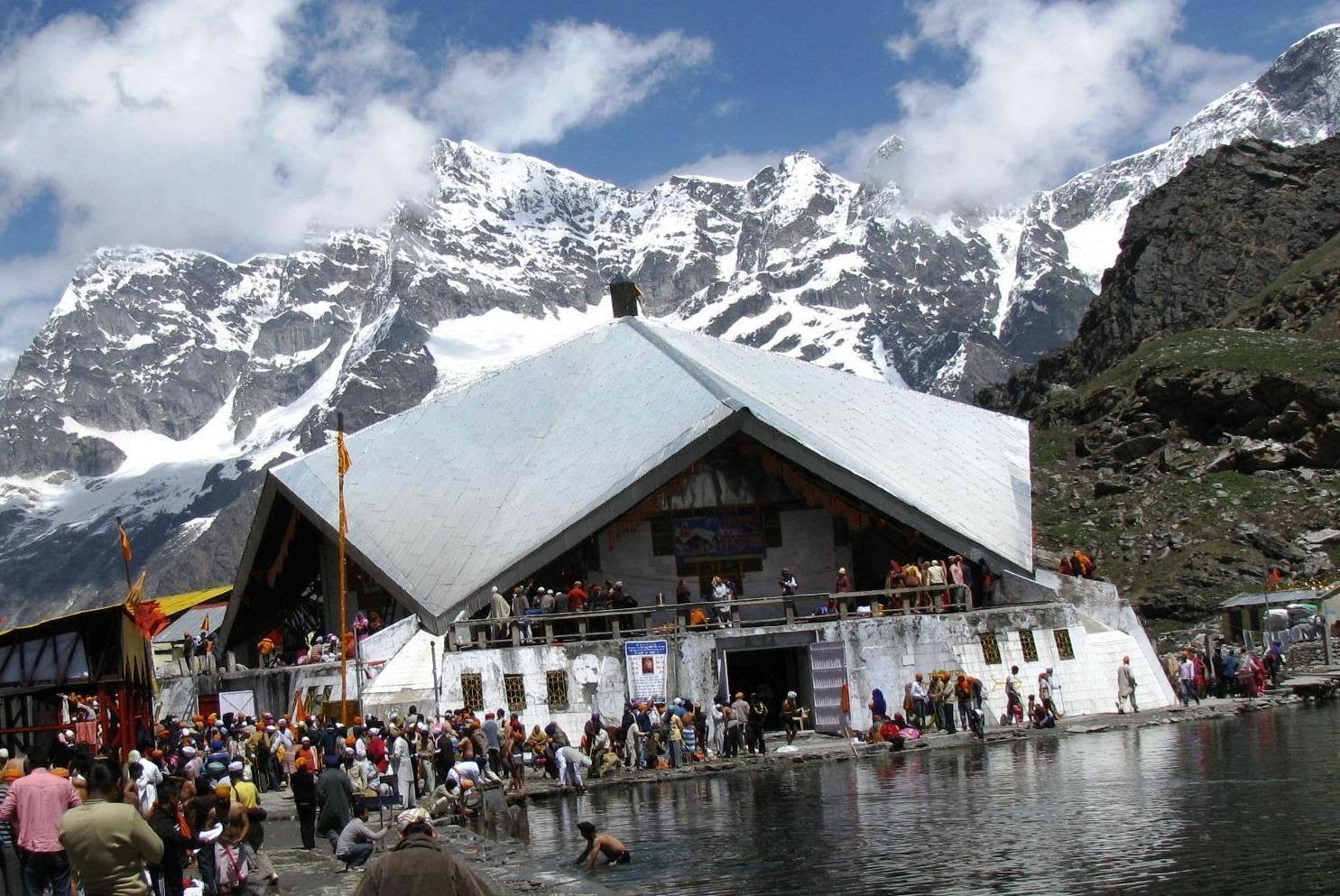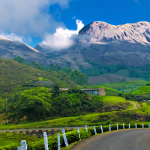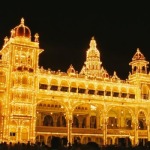Imagine a beautiful place high up in the Himalayas, where spirituality seamlessly melds with the awe-inspiring grandeur of nature. That’s precisely what you’ll find at Hemkund Sahib, nestled in the serene landscapes of Uttarakhand, India. But Hemkund Sahib is far more than a typical destination; it’s a place that not only captivates your senses but also touches your heart, revealing the sheer beauty of the world.
As you delve into this blog, we’ll be your guides on a virtual journey to this mystical place. We’ll unravel its unique charm, reveal the best times to visit, guide you on how to reach this remote gem, and introduce you to the captivating nearby attractions. Prepare yourself for a spiritual adventure that promises to etch memories into your heart, memories you’ll cherish forever.
Let’s embark on this remarkable expedition by delving into the intriguing history and profound significance of Hemkund Sahib.
The History and Meaning of Hemkund Sahib
In the heart of Uttarakhand’s Chamoli district, Hemkund Sahib stands as a place where history, mythology, and spirituality converge. Our journey into this sacred site takes us from its ancient roots steeped in Hindu mythology to its transformation into a revered pilgrimage destination for Sikhs and seekers from diverse backgrounds.
- Ancient Beginnings: A Mythical Tale
Hemkund Sahib, nestled within the Chamoli district of Uttarakhand, unveils a history that stretches back into the depths of antiquity. While it now holds profound importance for Sikhs, its origins are firmly entrenched in Hindu mythology. The very name ‘Hemkund’ translates to ‘Lake of Snow,’ bestowing upon it an enduring sense of mystery. Legends even whisper that Lord Rama himself graced this hallowed ground.
- Sikh Connection: A Spiritual Gem
However, the modern significance of Hemkund Sahib began to crystallize in the early 20th century, thanks to the endeavors of a Sikh scholar named Sant Sohan Singh. His Himalayan explorations led him to the discovery of this spiritual gem. Recognizing its profound potential, he ardently championed its importance within the Sikh community.
Building the Gurudwara: A Beautiful Act of Devotion
In 1930, under the inspiring leadership of Sant Sohan Singh, Sikh devotees embarked on the construction of the first Gurudwara at Hemkund Sahib. Additionally, this Gurudwara stands as a symbol of unwavering devotion and is dedicated to Guru Gobind Singh, the tenth Guru of the Sikh faith.
- Spiritual Significance: A Place of Deep Connection
Basically, Hemkund Sahib isn’t just a place; it’s a spiritual oasis. Tradition says that Guru Gobind Singh sought spiritual enlightenment here. Surrounded by natural beauty and a clear glacial lake, it’s a place of purity and devotion.
- Only Open in Summer: Nature’s Barrier
Albeit Hemkund Sahib is high up at over 4,000 meters, so it’s only accessible in the summer months. The harsh winter makes the area inhospitable and leads to the annual closure of the Gurudwara.
- A Pilgrimage Tradition: An Annual Sacred Journey
No sooner does May arrive than pilgrims from all around come to Hemkund Sahib to pay their respects to Guru Gobind Singh and experience the mix of spirituality and natural beauty.
- Inclusivity: Unity in Spirituality
Although this may be true, Hemkund Sahib isn’t just for one faith; it welcomes people from different backgrounds. Hindus, Sikhs, and people of various beliefs find common ground and shared reverence here.
By incorporating these transition words, the narrative becomes more cohesive and reader-friendly, ensuring a smoother flow of ideas and concepts within the text.
What’s the Hemkund Sahib Experience Like?
To begin with, the Hemkund Sahib experience is a serene journey amidst snow-covered peaks, where spirituality meets nature’s grandeur. Additionally, this experience includes echoing hymns and breathtaking natural beauty, creating an unforgettable atmosphere of peace and devotion.
Moreover, Hemkund Sahib offers a deeply spiritual experience that’s beyond the ordinary. As you step into the snowy landscape, a feeling of peace surrounds you. Furthermore, the Gurudwara in the snowy valley emits an atmosphere of peace and devotion.
- A Spiritual Awakening
Furthermore, the Hemkund Sahib experience isn’t just a physical journey; it’s a spiritual awakening. The hymns and prayers echo through the mountains, creating a sacred atmosphere that touches your soul.
- Connecting with Nature
Moreover, the Hemkund Sahib experience goes beyond the physical. Hymns and prayers echo through the mountains, creating a sacred atmosphere that deeply touches your soul.
Nearby Places to Explore in Hemkund Sahib
Likewise, when you visit Hemkund Sahib, you should also explore the nearby Valley of Flowers, a UNESCO World Heritage site. Not only is it a burst of colors with vibrant blooms, but the trek to get there is a must for nature lovers.
Additionally, while you’re in the area, don’t miss Joshimath, a town steeped in mysticism. In addition to that, it’s a gateway to various Himalayan destinations and gives you a glimpse into the local culture and heritage.
Best Time to Visit Hemkund Sahib
Knowing when to visit Hemkund Sahib is crucial for the best experience. Let’s explore the best seasons:
| Season & Month | Description |
| Summer Reverence (May-August) | The best time to visit Hemkund Sahib is during the summer months, from May to August. The weather is pleasant, and the trails are open, making it perfect for a pilgrimage. |
| Winter’s Embrace (September-April) | During the winter, the region is covered in snow, and it’s unsafe to visit. The Gurudwara remains closed due to harsh weather conditions. |
Hemkund Sahib Location In the Himalayan Sanctuary
Hemkund Sahib is in the Chamoli district of Uttarakhand, India, at an altitude of about 4,329 meters (14,200 feet). It’s nestled in the breathtaking Himalayan landscape, harmonizing spirituality and nature.
How to Reach Hemkund Sahib?
Reaching Hemkund Sahib involves a well-coordinated mix of road travel, train journeys, and trekking adventures, as this remote destination doesn’t offer direct flights or trains.
By Road
- To embark on your journey, make your way to either Rishikesh or Haridwar, two well-connected cities that serve as starting points.
- From Rishikesh or Haridwar, you can opt to hire a taxi or board a bus headed for Joshimath, a picturesque 10 to 12-hour drive from Rishikesh.
- Continuing from Joshimath, your next destination is Govindghat, a mere 1 to 2-hour drive away.
- The road journey concludes here, and the final leg of your expedition commences—the exhilarating trek to Hemkund Sahib.
By Train
- Rishikesh and Haridwar serve as the nearest railway stations for those choosing the train route, facilitating your journey to Hemkund Sahib.
- Booking a train ticket from major cities in India to Rishikesh or Haridwar is your initial step.
- Upon arriving at Rishikesh or Haridwar, you’ll smoothly transition into the road route described earlier.
By Flight
- Opting for air travel, your landing spot is the Jolly Grant Airport in Dehradun, Uttarakhand.
- Book a flight from one of the major Indian cities to Dehradun, setting the stage for your Hemkund Sahib expedition.
- Upon touchdown in Dehradun, secure a taxi or hop on a bus to reach Rishikesh or Haridwar.
- From there, follow the well-charted road route leading to Hemkund Sahib, in line with the instructions mentioned above.
It’s important to keep in mind that the road journey from Rishikesh or Haridwar to Govindghat can be quite an adventure. Picture winding mountain roads guiding your way, offering breathtaking views along the path.
Once you reach Govindghat, a new chapter of your journey unfolds—the trekking phase. How long it takes largely depends on your pace and can range from a single day to a bit longer. Therefore, it’s essential to prepare yourself adequately for the challenging terrain that lies ahead.
And here’s a valuable tip: Stay attuned to the weather conditions, especially if you’re planning your expedition during the revered pilgrimage season, which typically stretches from May to August. This way, you can ensure a safe and enjoyable experience on the road to Hemkund Sahib.
A Memorable Journey to Hemkund Sahib
Embarking on the path to Hemkund Sahib is an adventure in itself, a journey etched in the memory. Here’s your guide to reaching this sacred destination seamlessly:
- Commencing Your Expedition: Reach Gobindghat
Your journey kicks off by reaching Gobindghat, strategically nestled along the Rishikesh-Badrinath highway. You can easily access this starting point by hopping on regular buses or hiring a private taxi from nearby cities.
- Choosing Your Path: Trekking or Riding
From Gobindghat, your chosen path unfolds, whether by foot or on horseback. The trekking route guides you through landscapes of unparalleled beauty, adorned with snow-draped valleys. Many pilgrims opt for walking, immersing themselves fully in the profound experience.
- Navigating Natural Obstacles: Crossing the Alaknanda River
As your journey progresses, you’ll encounter natural obstacles, one of which is crossing the mighty Alaknanda River. Typically, reliable pulley systems or sturdy bridges are in place to facilitate this crossing, ensuring your safety on this pilgrimage.
- A Night Amidst Challenges: Staying Overnight in Ghangaria
Given the rugged terrain, it’s a common practice for travelers to spend a night in Ghangaria, the final stop before reaching Hemkund Sahib. Here, you’ll find accommodations and dining options, offering respite and sustenance.
Ascending to the Summit: The Final Push
With the break of a new day, you embark on the final ascent towards Hemkund Sahib. This phase of the journey presents steep and challenging terrain, demanding determination. Yet, the spiritual and natural rewards awaiting at the summit are beyond measure.
- Arrival at the Spiritual Oasis: Welcomed by the Gurudwara
Once you reach Hemkund Sahib, a profound sense of welcome envelops you. The Gurudwara stands amidst the enchanting embrace of a glacial lake and majestic mountains, offering solace and reflection.
- Planning for Success: Weather Check and Ideal Timing
Before you start your journey, it’s crucial to check the weather conditions. The best time to embark on this spiritual adventure is from May to August when the weather is safe and accessible.
Remember to check the weather conditions and plan your trip during the safe and accessible months (May to August) for the best experience. Now’s the time to end this blog to pack your bags for the trip.
Ready to Wrap Up?
Ultimately, as you prepare to wrap up this blog, one message resounds with utmost clarity: Hemkund Sahib is an experience that transcends mere pilgrimage. Above all, it etches itself deep into your soul, blending spirituality with the allure of nature’s beauty.
Additionally, whether you seek to strengthen your faith or yearn for a communion with nature in its purest form, Hemkund Sahib presents itself as the perfect destination. In conclusion, plan your visit during the opportune season, explore the nearby wonders, and set forth on a journey that transcends the physical realm, delving into the very essence of your being.
In essence, Hemkund Sahib is more than a destination; it’s a spiritual voyage, promising transformation and enlightenment to all who embark upon it.
FAQs about Hemkund Sahib
The trek to Hemkund Sahib from Govindghat is approximately 13 kilometers (8 miles) one way. It typically takes around 5 to 7 hours to complete, depending on your pace and the weather conditions. The trek is moderately challenging, with steep sections, so it’s important to be prepared.
Yes, there are certain clothing guidelines to respect the sanctity of the Gurudwara. Visitors are required to cover their heads with a scarf or turban as a sign of respect. Wearing shoes inside the Gurudwara is also prohibited. You’ll be provided with a designated area to leave your shoes before entering.
While it’s a good idea to book accommodations in advance, especially during the peak pilgrimage season, you can often find guesthouses and lodges upon arrival in Ghangaria. However, availability may be limited, so booking in advance provides peace of mind.







You must be logged in to post a comment.